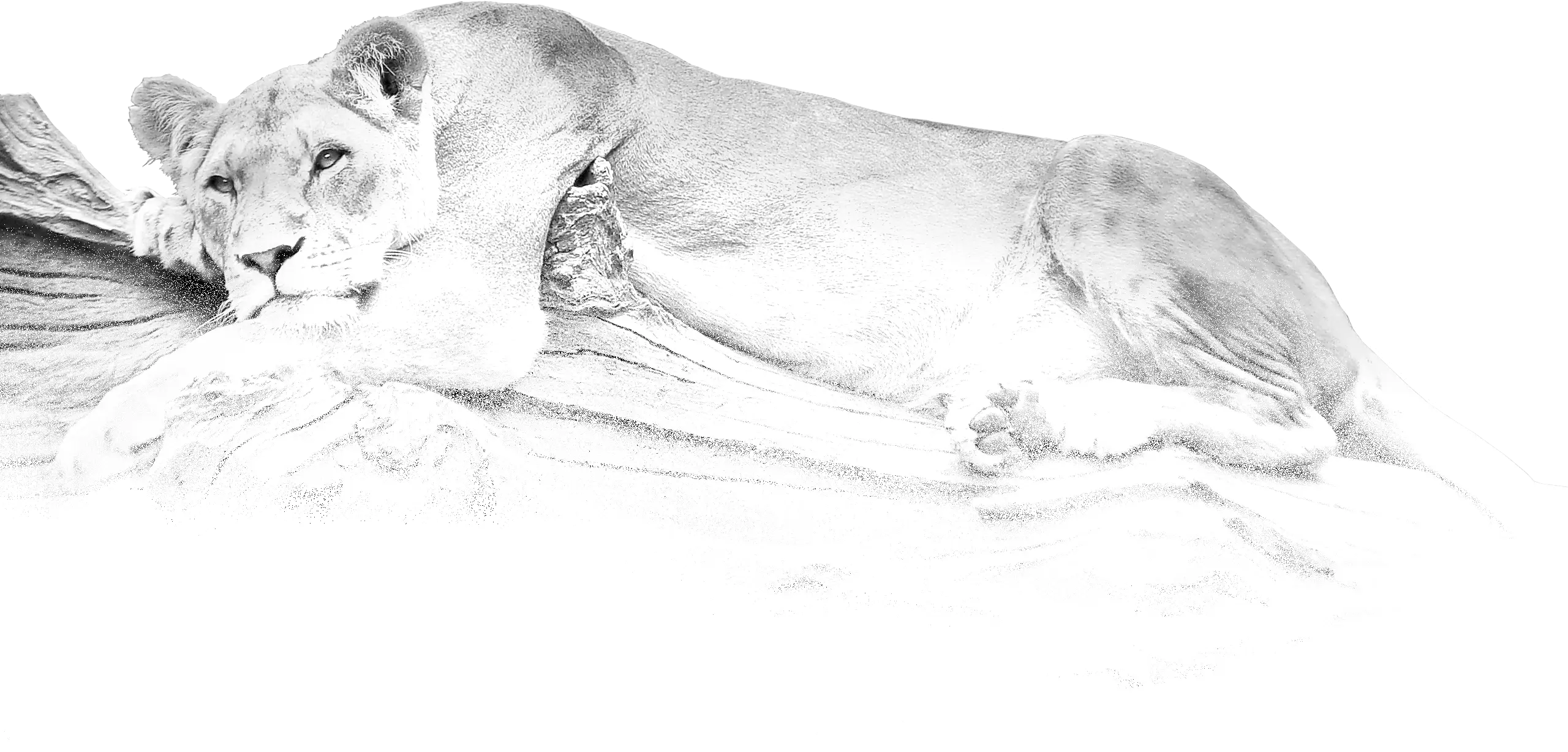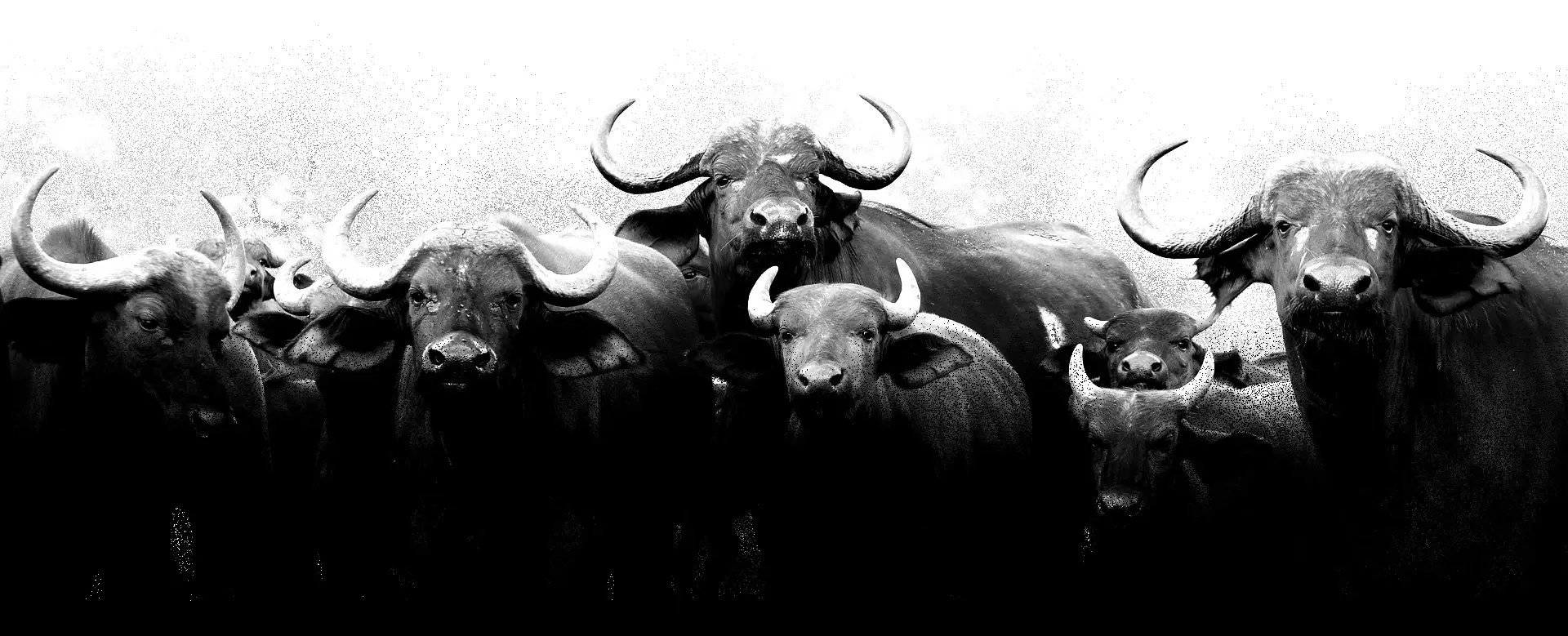
(Carnivora)
Carnivorans
Хижі
Carnivore, any member of the mammalian order Carnivora, comprising more than 270 species. In a more general sense, a carnivore is any animal that eats other animals, as opposed to a herbivore, which eats plants. Although the species classified in this order are basically meat eaters, a substantial number of them, especially among bears and members of the raccoon family, also feed extensively on vegetation and are thus actually omnivorous.
The order Carnivora includes 12 families, 9 of which live on land: Canidae (dogs and related species), Felidae (cats), Ursidae (bears), Procyonidae (raccoons and related species), Mustelidae (weasels, badgers, otters, and related species), Mephitidae (skunks and stink badgers), Herpestidae (mongooses), Viverridae (civets, genets, and related species), and Hyaenidae (hyenas). There are three aquatic families: Otariidae (sea lions and fur seals), Phocidae (earless seals), and Odobenidae (Walruses). These aquatic families are referred to as pinnipeds.
Habitat
Carnivores occupy just about every type of terrestrial habitat, and many aquatic habitats as well, from the tropics to the poles. They live in forests, deserts, mountains, grasslands, scrublands, tundra, and on open ice. Aquatic and semi-aquatic species live in freshwater rivers, lakes, and marshes, in marine coastal areas, and in the open ocean.
Physical Description
Most members of the order Carnivora can be recognized by their enlarged fourth upper premolar and first lower molar, which together form an efficient shear for cutting meat and tendon. These teeth are referred to as the carnassial pair. The exceptions are a few forms, such as bears, raccoons, and seals, in which these teeth are secondarily modified.
Besides usually having carnassials, almost all Carnivora retain the primitive number of incisors (3/3); an exception is the sea otter, which has 2/3. The outer (3rd) incisor is often relatively large and canine-like. The canines are large and conical. The number of teeth behind the carnassials varies considerably, from 1/1 in some cats to 2/2 in bears. All teeth are rooted and diphyodont.
The skulls of carnivorans are varied in form. Most have a well-defined, transverse glenoid fossa, and the dominant motion of the jaw is in the dorsal-ventral direction. The primary muscle powering the jaw is the temporal, and sagittal crest associated with the temporal is commonly a conspicuous part of the surface of the skull. Carnivores also have a strong zygomatic arch and a relatively large braincase. The auditory bullae and the turbinals also tend to be large and complex. Carnivores are fairly intelligent animals and most have relatively large brains. All members of Carnivora have simple stomachs.
Pinnipeds are large, perhaps because water conducts heat well and large animals have a low surface area to body mass ratio, which minimizes heat loss due to conduction. Their bodies are insulated by a thick layer of fat called blubber. In all species, the external ears are small or absent, the external genitalia and nipples are hidden in slits or depressions in the body, and the tail is very small. The forelimbs and hindlimbs are transformed into paddles. In both, the proximal limb elements (humerus and femur) remain within the body, and other aspects of the limbs, limb girdles, and spine are highly specialized for swimming. Most species have a relatively short rostrum, and the orbits are large. The cheek teeth are usually homodont (no differentiation along the toothrow), and the teeth are usually shaped like simple cones.
Carnivores tend to be medium-sized animals; too small and they couldn’t find enough within their capacity to kill; too large and they wouldn’t be able to satisfy their appetites. However, as a group, carnivores span a wide range of body sizes. Least weasels (Mustela nivalis), the smallest carnivores, can weigh as little as 35 g, and male southern elephant seals (Mirounga leonina), the largest carnivores, can weigh more than 3,600 kg. Many carnivore species are sexually dimorphic in size. Usually males are larger than females (as with fishers, lions, and wolves) but in a few species females are larger than males (as with spotted hyenas). Additionally, males of some species have ornamentation that females lack (as is the case with the inflatable probosci of male elephant seals).
Many carnivores have thick, luxurious coats, though some, like walruses, have coats that are quite sparse. Their fur comes in various colors, including black, white, orange, yellow, red, and almost every imaginable shade of gray and brown. In addition, many carnivores are striped, spotted, blotched, banded, or otherwise boldly patterned. Some species, such as gray wolves, are polymorphic for coat color. Domesticated cats and dogs exhibit thousands of combinations of coat colors and body shapes as a result of selective breeding by humans.
Reproduction
Carnivores have polygynous, polygynandrous, and monogamous mating systems. Southern elephant seals (Mirounga leonina) demonstrate extreme polygyny, wherein males fight for exclusive access to harems of females. Gray wolves (Canis lupus), on the other hand, are monogamous cooperative breeders; the dominant male and female of each pack breed and all members of the pack help raise their offspring. Solitary carnivores, such as bears, mustelids, and cats, are often polygynandrous, with males and females each having multiple partners during the breeding season.
Carnivores breed either aseasonally or seasonally; those in cold climates usually mate in winter and spring and give birth to their young during spring and summer. Females may be polyestrus or monoestrus; in some species, ovulation is induced by the act of mating. Carnivores may have two or three litters per year (as with least weasels), but most carnivore females have just one litter every one to two years. Delayed implantation, wherein the blastocyst lies quiescent for several months before implanting in the uterine lining, is common in some carnivore families (such as mustelids). After implantation, gestation periods range from five weeks in least weasels to 15 months in walruses. Typical true gestation periods last two to four months. Litter sizes range from 1 to 16, and are commonly 3 to 5. Females nurse their young for up to two years, and the young take up to seven years to reach sexual maturity.
Female carnivores nurture their young inside their bodies for up to 15 months and provide their young with milk after birth. The length of nursing varies considerably among carnivores. Some phocids only nurse their young for a couple of weeks, whereas walruses nurse their young for up to two years. The duration of lactation in terrestrial carnivores falls between these two extremes. Carnivore young range from highly precocial, harbor seal (Phoca vitulina) pups are able to swim a few minutes after birth, to altricial, as in bears. Female carnivores usually bear the sole responsiblity for nurturing and protecting their offspring, but male parental care is not uncommon, especially among canids. Carnivores that live in groups and breed communally may all share in the task of raising each others’ offspring. In some social species, like spotted hyenas (Crocuta crocuta), the mother’s position in the dominance hierarchy determines the position of her offspring. The young of spotted hyenas, wolverines, sea otters, bears, and large felids stay with their mothers for up to two years even though they are weaned well before this time; they depend on their mothers for food until they become proficient at hunting for themselves. In carnivores that form close-knit social groups, bonds between mother and offspring may extend well beyond the period of offspring dependency.
Lifespan/Longevity
Carnivores are relatively long-lived mammals, with most species living at least a decade. The main exceptions are small weasels (Mustela), which live up to six years in captivity but usually do not make it past one year in the wild. In general, pinniped carnivores live longer than fissiped carnivores, with several species (walruses, gray seals, ringed seals, Caspian seals, and Baikal seals) reported to live 40 or more years in the wild.
Behavior
Carnivora includes terrestrial, aquatic, and semi-aquatic species. Aquatic species (pinnipeds) are excellent swimmers, more at home in the water than on land. These animals are capable of diving to extreme depths (600 m in the case of Weddell seals) and remaining under water for astonishing periods (over an hour, although most dives are much shorter). Some carnivores, such as procyonids, are skilled climbers and spend much of their time in trees. Many terrestrial carnivores are excellent runners. A few are good long-distance runners, but more commonly, carnivorans are rapid sprinters that use stealth to approach their prey, then overcome it with a short, violent rush. A few, like bears and raccoons, seem relatively slow or clumsy, but even these species are capable of remarkable bursts of speed. Even those specialized for long-distance running don’t have the highly modified and relatively inflexible skeletons and movement patterns of cursorial herbivores like artiodactyls; this is probably related to the often unpredictable demands that catching and killing large prey place on their skeletons.
Carnivores exhibit varying degrees of sociality, ranging from solitary (bears, for example) to colonial (California sea lions, for example). Some carnivore species are difficult to place in a single category, as their degree of sociality varies over their geographic range or even among sex and age classes within a population. For example, red foxes (Vulpes vulpes) breed cooperatively in some regions and are largely solitary in others, and female coatis (Nasua nasua) live in close groups, whereas male coatis are solitary. It is estimated that about 10 to 15% of carnivore species regularly live in groups beyond the breeding season (this estimate does not include pinnipeds). For social carnivores, group living often entails the formation of strictly-enforced dominance hierarchies. Social bonds among group members can be very strong, with individuals showing affection for one another and keeping each other out of trouble.
Some carnivore species undergo seasonal long-distance migrations in concert with the migrations of their prey. Others stay within one home range year round. Home ranges tend to be large, and often vigorously defended, as each carnivore’s home range must encompass the home ranges of many prey animals. Carnivora includes both diurnal and nocturnal species. When resting, many carnivorans den in tree hollows, burrows, or caves. A few species, such as those in the family Ursidae, undergo long periods of torpor through the winter.
Communication and Perception
Most carnivorans have acute senses. Vision and hearing are excellent in many, often far surpassing the capabilities of humans. Domestic cats and other carnivores that hunt small rodents can hear ultrasounds emitted by their prey. Most carnivorans come equipped with tactile hairs (vibrissae) on the face and legs, which they use to feel their way through narrow, dark surroundings. The sense of smell is often remarkable. Carnivorans make extensive use of chemical signals excreted in urine and feces and produced by glands in the skin and anal region. They use these chemical signals for scent-marking territories and for conveying information about identity, social status, and reproductive status. Carnivorans also communicate acoustically with a variety of yips, howls, barks, growls, roars, and purrs. These sounds have various functions, including strengthing social bonds, advertising for mates, defending territories, and communicating alarm, distress, and contentment. Social carnivores such as lions sometimes erupt into choruses of loud roars as a means of calling one another to assemble. Visual signals, mainly in the form of body posturing, are also used by carnivorans to communicate, and tactile signals, as when a wolf licks and bites the muzzle of a dominant individual to show submission, are used as well.
Food Habits
Animal matter makes up a substantial portion of the diet of most carnivorans. However, not all members of Carnivora are carnivorous. Some, such as bears and raccoons, are decidedly omnivorous, and giant pandas are primarily vegetarian. Foods consumed by carnivorans include mammals, birds and eggs, reptiles, amphibians, fish, carrion, insects and other arthropods, earthworms, mollusks, crustaceans, fruit, nuts, tubers, leaves, shoots, and plankton (on which crabeater seals specialize).
Carnivorans have various means of capturing their prey. Some ambush prey, overtaking it in a sudden burst of speed, others chase prey over long distances and slowly tire it out. Some (such as skunks) simply shuffle about and eat whatever they happen to come across. Still others scavenge from carcasses or, in urban areas, from garbage cans. Some carnivores, such as arctic foxes (Vulpes lagopus) are known to cache their kills for later consumption. Crabeater seals (Lobodon carcinophaga) are unique among carnivores in that they are filter feeders. They have specialized teeth which allow them to strain tiny zooplankton, their staple food, from the water.
Predation
Many carnivorans are top predators in their ecosystems, and therefore do not face the threat of predation as adults, though their young may be vulnerable. Small terrestrial carnivorans face predation by larger carnivorans, and by diurnal and nocturnal birds of prey. Pinnipeds face predation by large cetaceans such as killer whales (Orcinus orca) and by sharks. Many carnivorans, large and small, terrestrial and aquatic, are hunted by humans.
Most carnivorans use their teeth and claws to fend off predators. A carnivore that feels threatened typically crouches and bares its teeth, hissing or growling at its attacker and biting and scratching if the attacker gets too close. Pinnipeds, on the other hand, rely largely on their speed and agility in the water to escape predators. Female carnivorans often hide their helpless infants in a den, and may switch the den location occasionally to avoid detection. Some carnivoran parents are also known to vigorously defend their offspring if necessary. Many carnivorans are the same color as their background (such as Arctic foxes, which turn white in winter to match the snow). They also frequently exhibit countershading or color patterns, such as spots and stripes, that break up their outline and make them difficult to see. A few carnivorans have special adaptations to defend themselves against predators. Skunks and some mustelids, herpestids, and viverrids have well-developed anal glands, which produce a foul-smelling musk that is released under stress. These animals usually bear aposematic coloration in the form of contrasting stripes and bands, warning would-be predators to stay away. Finally, it has been postulated that some carnivorans mimic others to avoid predation. For example, the coloration of cheetah cubs, which are highly vulnerable to predation, may mimic that of honey badgers, which are aposematic and highly aggressive.

